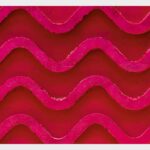In industries that handle high-temperature commodities, durability and efficiency are crucial for operational success. Conveyor systems often face extreme conditions, leading to wear and tear. Heat-resistant rubber sheets are an essential solution for these challenges. In this blog, we will explore the benefits of using heat-resistant rubber sheets, such as the Super Heat Resistance Rubber Lagging Sheet and Heat Resistant and Energy Saving Pulley Lagging Sheet, particularly in high-temperature environments.
1. Enhanced Heat Resistance
One of the primary benefits of heat-resistant rubber sheets is their ability to withstand elevated temperatures. These sheets are designed for applications where the temperature can rise significantly, ensuring optimal performance. For instance, when transporting hot materials using HR-grade conveyor belts, using a heat-resistant rubber sheet for pulley lagging is vital to prevent thermal damage. Ordinary rubber sheets cannot handle such conditions, leading to frequent shutdowns, increased maintenance, and overall reduced efficiency.
2. Energy Efficiency
Heat-resistant rubber sheets, like the Heat Resistant and Energy Saving Pulley Lagging Sheet, are engineered to reduce energy consumption. They help in minimizing belt slippage by increasing the friction coefficient between the belt and the pulley, leading to smoother operation. The result is improved energy efficiency, as the system requires less power to maintain movement and operate effectively. This energy-saving feature not only lowers operational costs but also contributes to the system’s longevity.
3. Extended Conveyor Belt Life
Using heat-resistant rubber sheets prolongs the lifespan of your conveyor belts. These rubber sheets are specifically designed to resist the wear and tear caused by high temperatures, which can quickly degrade ordinary materials. By preventing belt slippage and minimizing damage, heat-resistant rubber sheets ensure that your HR-grade conveyor belts operate smoothly for longer periods, reducing downtime and repair costs.
4. Increased Durability and Strength
Durability is another critical advantage of heat-resistant rubber sheets. Their composition allows them to withstand not only heat but also physical stress, ensuring they maintain their structural integrity even under harsh conditions. This is especially true for products like the Heat Resistance Rubber Sheet, which offers enhanced strength and durability. This strength makes them ideal for industries dealing with heavy and hot materials, where equipment failure is not an option.
5. Customizable Solutions
At Oliver Rubber Industries LLP, customization is key. Heat-resistant rubber sheets are available in a variety of sizes and thicknesses to meet specific needs. For example, the standard size of the Super Heat Resistance Rubber Lagging Sheet is 1200mm x 2400mm with a thickness of 10/12mm. However, depending on the application, the width, thickness, and length can be tailored to fit different conveyor systems. This flexibility ensures that businesses get the most efficient and reliable solution for their specific high-temperature environments.
6. Reduced Maintenance Requirements
In high-temperature environments, frequent maintenance can significantly impact productivity. However, heat-resistant rubber sheets are designed to reduce the need for constant repairs. Their superior heat and wear resistance help maintain optimal performance over extended periods, reducing the frequency of maintenance and the associated downtime.
Conclusion
Heat-resistant rubber sheets, such as the Heat Resistance Rubber Sheet and Heat Resistant and Energy Saving Pulley Lagging Sheet, offer numerous benefits for industries operating in high-temperature environments. From enhancing energy efficiency to extending conveyor belt life, these sheets are an invaluable asset for ensuring smooth, reliable, and cost-effective operations. By choosing high-quality products from Oliver Rubber Industries LLP, businesses can ensure the longevity and efficiency of their conveyor systems in even the most challenging conditions.

